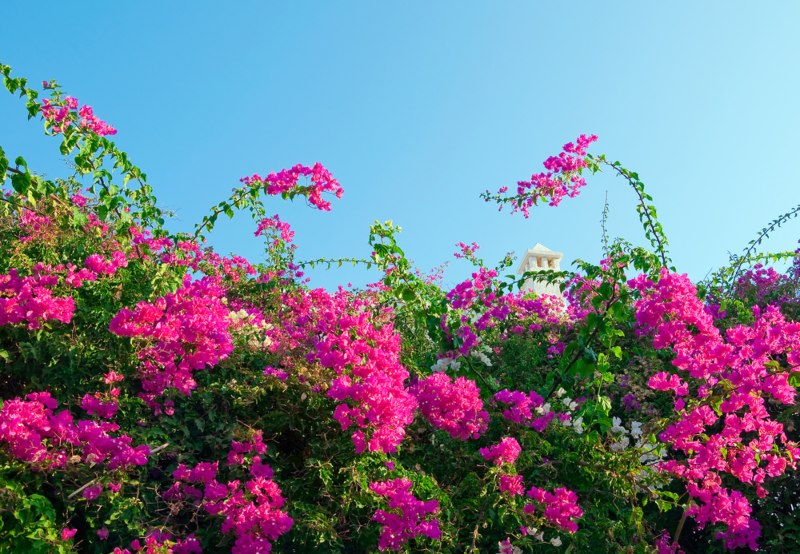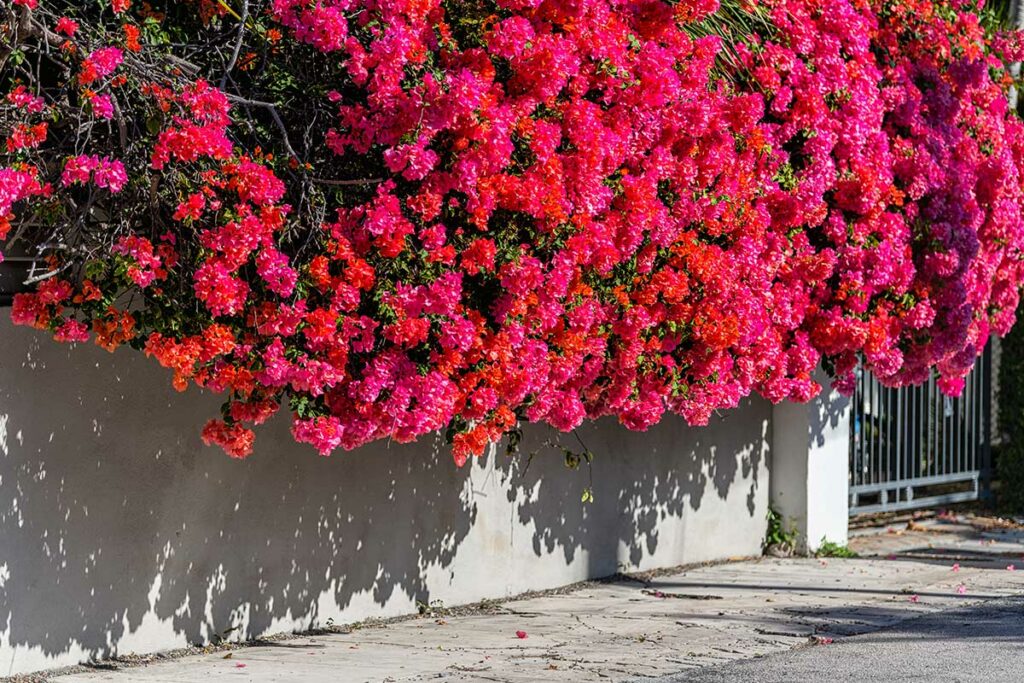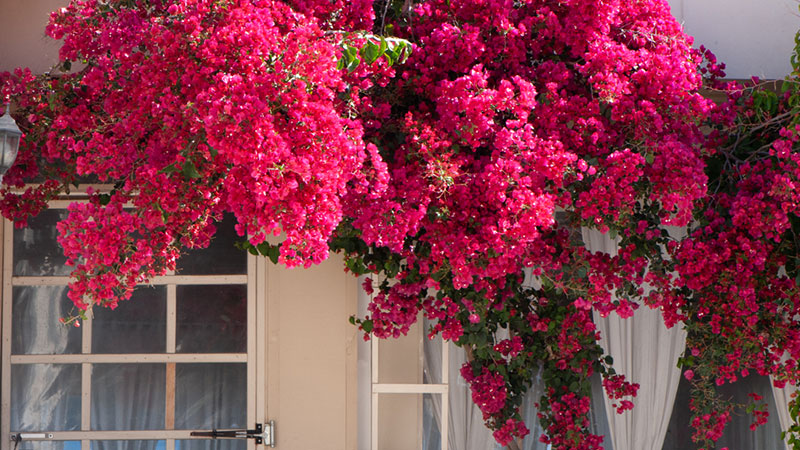
Bougainvillea is a beautiful plant that can serve a lot of decorative purposes. It grows so many flowers that its color really stands out in a flowerbed or garden. They can be grown in zones 9 through 11. The stunning blooms can be found in several bright colors, including white, pink, red, yellow, orange and purple. Some even blossom with multi-colored flowers. Their bloom time is generally in May through July, but they can also bloom in December, though that blooming will be less than the first blooming season.
See the different varieties of Bougainvillea here.
Light and Temperature Requirements
Bougainvillea needs a lot of sun, requiring six or more hours of full sun each day in order to bloom at their best. If you bring it indoors during the winter, it will still need a lot of light to stay healthy. This plant does well when the temperature is 80 or more, and it will tolerate temperatures as low as 40 degrees. If it’s kept inside, it needs temperatures from 60 to 70 to thrive.
Watering
The bougainvillea can tolerate drought when it’s planted in the ground. When it’s indoors, it needs to be watered regularly. When it’s outdoors, you can water it about one time per week or two, but allow the soil to dry out before you water it again. If your climate isn’t on the drier side, you may rarely have to water it. To have the most blooms, let the soil stay on the drier side. In the winter, the plant will go dormant, and it should not need more than being watered once a week.
Soil and Fertilizing
Bougainvilleas need soil that drains well. If you grow them in a container, make sure there are drainage holes so the roots won’t stay in water and rot. Don’tgive them soil that has a lot of peat moss, as it will hold the moisture in. The bougainvillea can benefit from regular fertilizing. However, if they are fertilized too often, they will not grow as many flowers. About once a month, give your plant either a 5-5-5 fertilizer or a 10-10-10. Before adding it to the soil, dilute it by half so that it won’t harm the plant. Some gardeners also add a little Epsom salt to the soil every once in a while.

Deadheading and Pruning
Pruning your bougainvillea is necessary to keep them the size and shape that you want them. They can grow and climb and invade new parts of a flower bed easily. After a flowering cycle has ended, prune them a little to keep the plant’s desired shape. Deadheading the wilted blooms can be done throughout the year. If you see any of the foliage that was frost-damaged, snip that off as well.
Nutritional Deficiencies
Bougainvilleas are susceptible to nutritional deficiencies, and this will cause symptoms in the plant. If the leaves get a purple edge and have brown at the tip, it is not getting enough potassium. If the leaves become a pale green, the plant likely needs more nitrogen. In young plants, wilting can signal that it needs more calcium. If the leaves look twisted, the plant needs more zinc.






